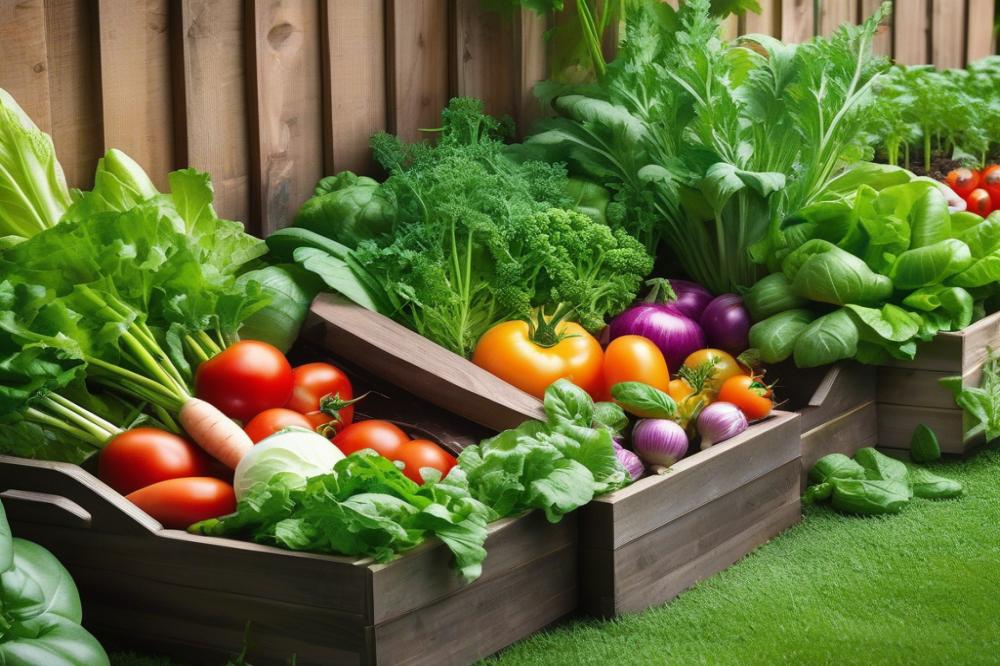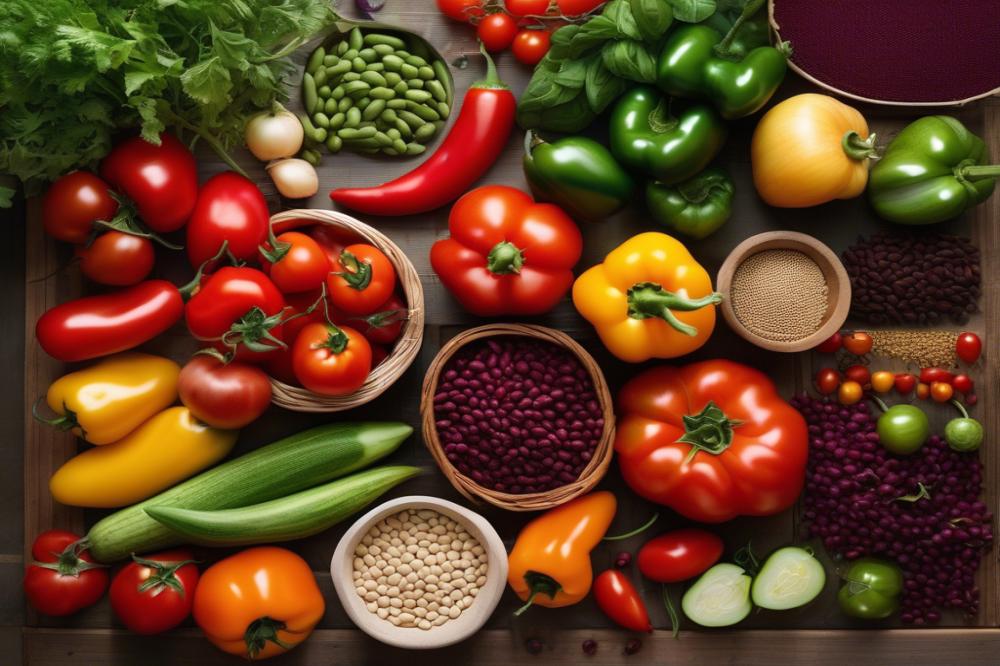Introduction
When it comes to growing tomatoes, few varieties catch the eye quite like Hillbilly Tomatoes. This heirloom type is cherished for its vibrant colors and delicious flavors. Originating from the southern United States, these tomatoes thrive in warm climates and bring a touch of rustic charm to any vegetable garden.
Heirloom varieties, such as this, hold a special place in gardening. They not only offer unique tastes but also preserve history and biodiversity. Many gardeners prefer organic gardening practices, and growing heirlooms allows them to cultivate responsibly while enjoying the fruits of their labor. Tomato plants raised from heirloom seeds often yield fruit that is far superior in flavor compared to hybrids.
This article aims to provide practical gardening tips for successfully cultivating Hillbilly Tomatoes. Readers will discover essential information about tomato care, common tomato diseases, and the best practices for southern gardening. By the end, you will feel confident and well-prepared to start your own home gardening adventure with these delightful heirloom tomatoes.
What Are Hillbilly Tomatoes?


This heirloom variety is known for its fascinating characteristics. Hillbilly tomatoes are large, multi-colored fruits that have a blend of yellow and red hues. Their size can often rival that of a softball, making them quite striking in any vegetable garden. When you slice them open, you’ll find a juicy, meaty interior filled with a range of flavors.
History and Origin of Hillbilly Tomatoes
These tomatoes have a rich background tracing back to the southern United States. It is reputed that they were first cultivated by families in the Appalachian region. Over the years, these home garden favorites have gained popularity among organic gardening enthusiasts. This variety was passed down through generations, cherished for both its taste and its ability to thrive in diverse conditions.
Unique Flavor Profile and Characteristics
Tasting a Hillbilly tomato reveals a delightful sweet and slightly tangy flavor. This flavor makes them perfect for salads and fresh dishes. The texture is firm yet juicy, which adds to their versatility in cooking. When grown under the right conditions, these tomatoes can develop a robust taste that truly stands out.
Comparison with Other heirloom tomatoes
Compared to other heirloom varieties, Hillbilly tomatoes have a distinctive sweetness and a more vibrant coloration. While some heirlooms may tend toward a more acidic bite, these tomatoes maintain balance. They generally offer good resistance to common tomato diseases, making them a reliable choice for home gardening. Additionally, gardeners often find them easy to care for, requiring similar practices to those of other tomato plants.
When growing tomatoes, including this variety can elevate your garden’s bounty. Whether you are an experienced gardener or just starting out, these tomatoes can be a rewarding project. Incorporating them into your gardening tips and practices might lead to even richer harvests.
Preparing Your Garden for Hillbilly Tomatoes


Choosing the Right Location for Planting
Finding the perfect spot for your tomato plants is essential. Look for an area that receives at least six to eight hours of sunlight daily. Avoid locations that hold water after heavy rain. Drainage is crucial since tomatoes dislike soggy roots. A southern-facing slope can provide warmth, which is beneficial for these heirloom varieties. It can help to shield plants from wind as well.
Soil Preparation and Ideal Conditions
Quality soil makes a big difference when growing tomatoes. Test the pH if possible; they thrive in soil that is slightly acidic, between 6.0 and 6.8. Adding compost can enrich the soil effectively. Mix in organic matter to boost fertility and structure. Well-drained soil is a must to prevent roots from rotting. Aim for a loose texture to allow roots to spread easily.
Organic Gardening Practices for Optimal Growth
Choosing organic gardening can enhance both health and flavor in your vegetable garden. Use natural fertilizers like fish emulsion or bone meal to nourish your tomato plants. Avoid synthetic pesticides; instead, rely on natural solutions to combat pests. Handpicking bugs can be effective in maintaining the garden’s health. Understand the importance of crop rotation to reduce the risk of tomato diseases.
Importance of Companion Planting with Other Vegetables
Companion planting can significantly benefit your garden. Pairing tomatoes with basil is a common practice. This mixture can enhance flavor while keeping pests at bay. Other suitable companions include peppers and beans, which can coexist harmoniously. However, avoid placing tomatoes near corn or potatoes, as they may compete for nutrients. This strategic approach fosters a thriving ecosystem in your home gardening project.
Planting and Caring for Hillbilly Tomatoes


Ideal Planting Time and Techniques
Growing tomatoes begins with understanding the right time for planting. In most southern gardening climates, late spring is the ideal period. Wait until all danger of frost has passed, typically around mid-April to mid-May. For best results, you can start seeds indoors around six to eight weeks prior. Choose a sunny spot in your garden with well-drained soil filled with organic matter. Dig holes deep enough to accommodate the root system of tomato plants. Placing the seedlings deeper helps them develop stronger stems.
Watering Tips and Irrigation Methods
Consistent watering is crucial for healthy tomato growth. Aim to keep the soil evenly moist but not soggy. Watering early in the morning allows moisture to reach the roots before the heat sets in. Drip irrigation works well for these plants, minimizing water on the leaves. Moisture on foliage can lead to tomato diseases, which are common if proper care is lacking. An inch of water each week is a general guideline but adjust according to rainfall and temperature.
Fertilization Guidelines and Organic Options
Nutrition plays a critical role in growing tomatoes. A balanced fertilizer rich in potassium and phosphorus encourages fruit development. Many organic gardening enthusiasts prefer compost to enhance the soil without harsh chemicals. Fertilizing once a month is usually effective. Pay attention to the specific growth stage of your plants. Young seedlings need less, while the mature plants benefit from additional nutrients as they begin to bear fruit.
Support Systems for Tomato Plants
Providing support is essential for sturdy growth. Tomato plants can become top-heavy, especially during fruiting. Using stakes, cages, or trellises can help keep them upright and healthy. These support systems allow for better air circulation, reducing the risk of diseases. When installing stakes, place them at the time of planting to avoid disrupting the roots later. Regularly check your plants and tie them gently as they grow, ensuring they have space to thrive.
Common Challenges and Tomato Diseases
Growing tomatoes can be rewarding, but you might face some challenges along the way. Hillbilly tomatoes are susceptible to several diseases that gardeners should watch for. Blight is a common issue that affects many tomato plants. This disease can spread quickly, causing leaves to wilt and turn brown. Fusarium wilt is another disease that targets the root system, leading to plant decline. Some gardeners may also encounter blossom end rot, which causes dark spots on the fruit. Keeping an eye out for these signs is crucial for maintaining healthy plants.
Preventative measures can help reduce the risk of diseases. Crop rotation is an effective technique. By changing where you plant your tomatoes each year, you can lessen the chance of soil-borne diseases. Additionally, proper spacing between plants allows for better air circulation. This can help prevent moisture from building up, which often leads to blight. Applying mulch around the base of plants can also protect against disease by keeping the soil moist but not waterlogged.
Pest management is another vital aspect of tomato care. You may encounter pests like aphids, spider mites, and whiteflies. These can damage your tomato plants if left untreated. Neem oil is a popular organic solution that can deter many common pests. Regularly inspecting plants helps catch infestations early. Maintaining a healthy ecosystem in your vegetable garden can also attract beneficial insects that prey on harmful pests. This natural balance can reduce the need for chemicals in home gardening.
Watering can be a tricky balance for tomato plants. Signs of overwatering include yellowing leaves and roots that look mushy. If your plants have droopy leaves but the soil feels dry, they might be thirsty. Under-watering can stunt growth and lead to less fruit production. A consistent watering schedule is essential for healthy growth. Using soaker hoses can help deliver water right to the roots where it’s needed most. Remember, each tomato plant has its own needs, so observing them closely is key.
Harvesting and Using Hillbilly Tomatoes
How to Tell When They Are Ripe
The right time to pick tomatoes can be tricky. Look for a rich, deep yellow-orange color. When a gentle squeeze reveals a slight softness, it’s a signal that they’re ready. Green spots should disappear, replaced by an even hue. Checking the stem can help too. If it begins to brown, then ripeness is near. Scents are another good indicator; they should smell sweet and earthy.
Best Practices for Harvesting Tomatoes
Careful harvesting is important for preserving quality. Always use clean, sharp scissors or garden shears. This helps avoid damage to the plant. Gently twist the fruit off when cutting, ensuring minimal stress on the vine. Harvest during cooler parts of the day, such as early morning or late afternoon. Sunlight can lead to rapid moisture loss if the tomatoes sit outdoors for too long.
Cooking and Preserving Tips for Heirloom Tomatoes
Cooking with your freshly picked treasures can be delightful. Roasting brings out their natural sweetness. Slice them for sandwiches or chop them for salads. Canning is another great way to save the flavor for winter. Use a water bath canner to process jars safely. Make sure to follow recipes closely to avoid spoilage. Drying is another excellent option; sun-drying can create tasty snacks.
Creative Uses in Southern Cuisine
Southern cooking inspires many delicious dishes. Incorporating them into a classic BLT sandwich adds richness. They also shine in fresh salsas sprinkled with cilantro and lime. A tomato pie offers a savory twist, layered with cheese and herbs. Don’t forget about homemade sauces; they can elevate pasta to new heights. With each bite of a dish made from these heirloom varieties, a taste of comfort and tradition lingers.
Final Thoughts on Growing Hillbilly Tomatoes
Hillbilly Tomatoes stand out with their incredible flavor, vibrant colors, and unique history. Heirloom varieties like these are cherished not just for their taste, but also for the traditions they carry. Their large, juicy fruit can enhance any summer salad. Gardeners have reported excellent results with this variety, showcasing its adaptability and resilience in various climates.
Consider adding this heirloom to your garden for a rewarding experience. Growing tomatoes can be a fulfilling hobby. Their stunning beauty and delicious fruit bring joy to any home. Many gardeners appreciate the satisfaction of nurturing such a vibrant plant. Plus, they make for excellent conversation starters at local gatherings or farmers’ markets.
As you cultivate your tomatoes, remember a few helpful gardening tips. Regular watering is essential, especially during dry spells. Mulching keeps the soil moist and helps control weeds. Planting in well-draining soil will promote healthy roots. Lastly, don’t forget to support your plants as they grow tall and heavy with fruit. Precise care can lead to a bountiful harvest.
In summary, take the plunge into growing this remarkable variety. You may be pleasantly surprised by what you can achieve. Your garden will flourish, and you might find a new favorite in your culinary adventures.



